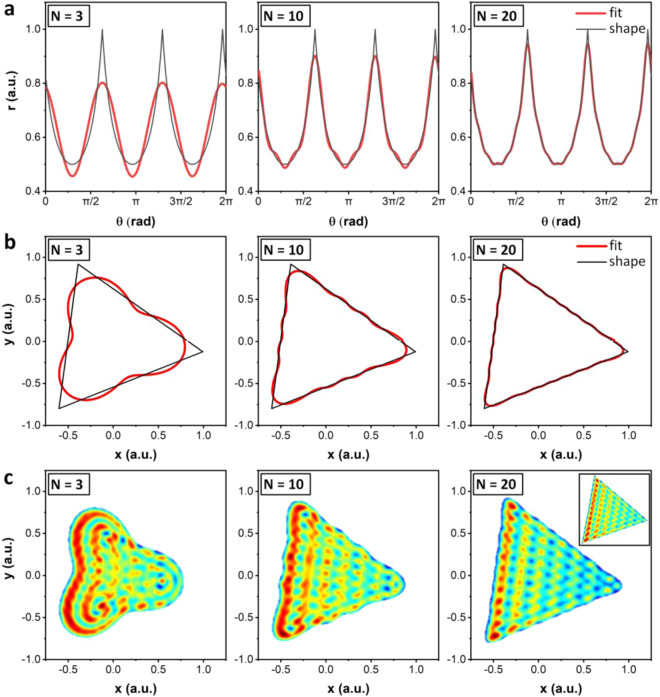Figure 3.
Fourier series channel geometry representations, used as the output format from the DNN. (a) The radius of a given shape as a function of θ can be mapped (here in black), where its Fourier series approximation can be calculated from Eq. 6 for a given value of N, here for N = 3, N = 10 and N = 20. (b) These approximations can be superimposed on the shapes, here showing a 20° rotated equilateral triangle, demonstrating that increasing values of N provide better channel geometry fits. (c) The acoustic field increasingly matches that of the actual channel geometry (inset at right) for increasing values of N. The SAW wavelength used here is equal to 0.14 a.u. We use N = 20 for our work since it provides a reasonable approximation of the shape and acoustic field while minimizing the required number of trained neurons in the DNN.

